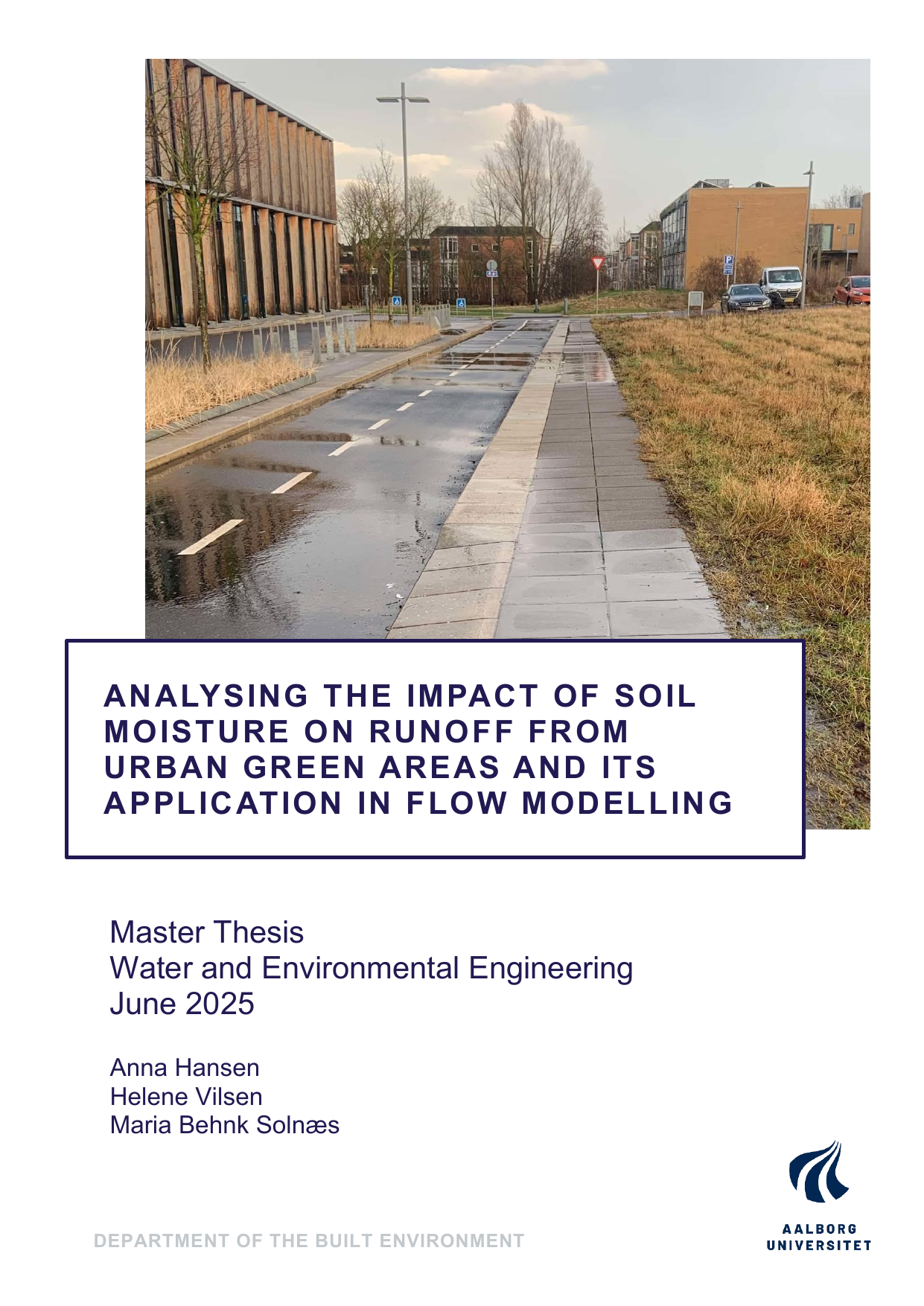
Analysing the Impact of Soil Moisture on Runoff from Urban Green Areas and Its Application in Flow Modelling
Authors
Term
4. term
Publication year
2025
Submitted on
2025-06-03
Pages
224
Abstract
The impact of contingent runoff from urban green areas is often overlooked in runoff modelling, particularly in relation to urban drainage systems. This thesis examines how such runoff relates to soil moisture across three spatial scales: hillslope scale, urban subcatchment scale, and hydrological scale. As part of the MUDP-project VandKant, volumetric water content (VWC) sensors were installed and flow observations conducted at representative sites. Analyses are conducted at all three spatial scales to assess the relationship between VWC and runoff generation. A relationship is identified, though it varies by scale. At the urban subcatchment scale, no statistically significant relationship is observed due to the dominance of impervious surfaces. In contrast, a clear statistical correlation is found at the hillslope scale and hydrological scale, where green areas play a more prominent role. Lastly, the thesis assesses whether the incorporation VWC or the DMI drought index (DI) can improve flow models. To evaluate predictive capability, flow at the hydrological scale is simulated using three simple models: Linear Regression Model, Extended Time-Area Model, and Linear Reservoir Model. Results indicate that including either VWC or DI generally enhances model accuracy, highlighting the importance of soil moisture in runoff prediction at larger scales.
Keywords
Afstrømning ; Situationsafhængig ; Jordfugtighed ; Vandindhold ; Datadreven modellering ; Oversvømmelse ; Varsling ; Klimatilpasning ; Vand ; Urbane områder ; Vejle ; Lystrup ; Odense ; Hørsholm ; Regn
Documents
